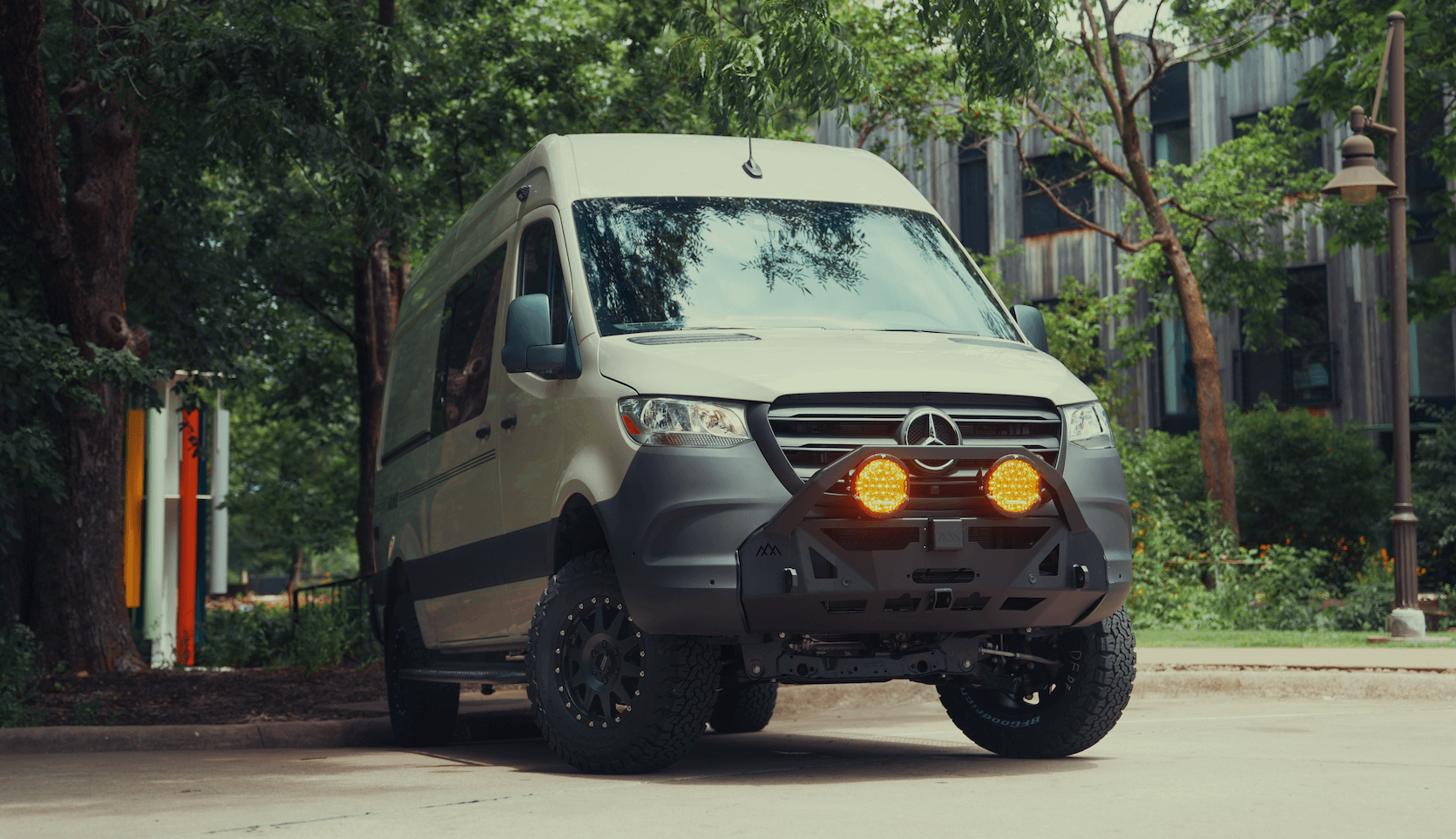Recreational Vans

Engine air is happiest when it is clean, cool, and dry. Snorkel kits for vans move the intake from the hot, splash prone fender area up to the A pillar or roofline where airflow is cleaner and less likely to ingest water. They are common on expedition builds, dusty job sites, and any route with creek fords or fine silt that overwhelms paper filters. The payoff is better filtration life, more consistent airflow, and a margin of safety when weather or terrain turns unpredictable.
A snorkel raises the intake path above the hood line so the engine inhales from a higher, cleaner airstream. That change reduces the likelihood of hydro lock during water crossings because splashes and bow waves are less likely to reach the intake mouth. In dry environments, a raised intake sits above the densest dust plume, so filters load more slowly and sensors see steadier readings.
The snorkel head or pre filter can be oriented forward to meet oncoming air or rearward to cut down on rain. Many heads accept a vortex style pre cleaner that spins heavy dust outward before it reaches the airbox. That pre separation helps on unpaved roads where talcum fine sediment lingers in the wake of traffic.
A snorkel is only one part of water readiness. Door seals, axle breathers, transmission breathers, and electrical connectors must also be addressed if deep fords are planned. Still, a sealed snorkel path significantly lowers the chance of engine damage from a momentary splash or an unexpected hole mid crossing. In arid zones, the benefit shifts to filtration efficiency and reduced power loss from clogged elements.
Compatibility matters. Modern vans package electronics, airboxes, and sensors tightly behind fenders and along the A pillar. A platform specific kit accounts for panel curvature, mounting bosses, and the airbox inlet size so the path remains smooth and leak resistant. Universal parts can work, but they often demand fabrication to avoid sharp bends or restrictions that could impact drivability.
Material choice affects durability and noise. Rotationally molded polyethylene handles trail scuffs and temperature swings well. Metal systems offer rigid structure and paint match options but can transmit intake resonance if not isolated. The goal is a stable, sealed path that preserves airflow and looks integrated with the body lines.
Design priorities include smooth internal radii, minimal joint count, and secure brackets that prevent vibration fatigue. The snorkel head’s water separation features, such as a rain gutter or cyclonic pre filter, further protect the airbox. If forced induction is present, verify the snorkel diameter supports the engine’s volumetric flow to avoid unnecessary pressure drop at high load.
A sound install begins with precise layout. Templates must align with body features and take account of panel thickness, seam locations, and hidden structures. After cutting, exposed metal edges need etch primer and paint to prevent corrosion. Every joint in the intake path should use quality gaskets or sealant formulated for under hood temperatures. Mounting brackets should tie into strong points behind the fender and along the A pillar, with rivnuts or backing plates to distribute load.
After assembly, leak testing is critical. With the engine off, the intake can be lightly pressurized or smoke tested to confirm all joints are airtight. A quick splash test with a hose verifies head drainage and checks for intrusion at the head to body interface. Finally, recalibrate the air filter maintenance schedule based on environment, and inspect hardware after the first few trail miles.
Frequent pitfalls include cutting without confirming inner clearances, leaving raw edges unsealed, misaligning the snorkel head so rain funnels into the system, or forgetting to reroute breather hoses for deep water work. A careful post install shakedown catches rattles, hose chafe, or clamp creep before your first long route.
When a van’s fender, A pillar, and airbox are involved, craftsmanship matters. OZK Customs handles layout, body protection, sealed duct routing, and post install validation in house. If your platform needs fabrication for a smooth path or a custom bracket, our team designs and builds components that look factory and perform in the backcountry.
Beyond the snorkel, we can integrate breathers, splash guards, and serviceable pre filters to match your terrain. During handoff at Adventure Point in Fayetteville, you can walk through maintenance routines, orientation for water crossings, and dust zone best practices before pointing the van toward the trail.
You want reliable air in rough places. We bring the tools, fitment knowledge, and test process that keep engines safe when water rises or dust hangs in the air. Share your platform, routes, and goals and we will map a solution that fits your van and your plans.
What we do
OZK Customs designs and builds complete custom van solutions, overland upfits, and precision fabrications from Fayetteville, Arkansas. We offer full builds and partial upfits, including intake and protection upgrades, electrical systems, storage, racks, lighting, and more. Our process emphasizes listening first, then crafting components that work hard on the road and off.
Ready to protect your engine and open more routes? Tell us about your van, terrain, and goals. OZK Customs will recommend fitment, routing, and sealing that suit your platform and driving style, then install it with body shop precision. Start your build conversation now.
ADDRESS:
6159 E Huntsville Rd, Fayetteville, AR 72701
PHONE:
(479) 326-9200
EMAIL:
info@ozkvans.com